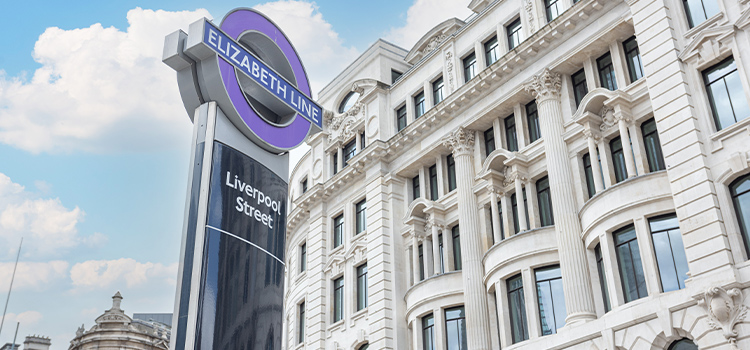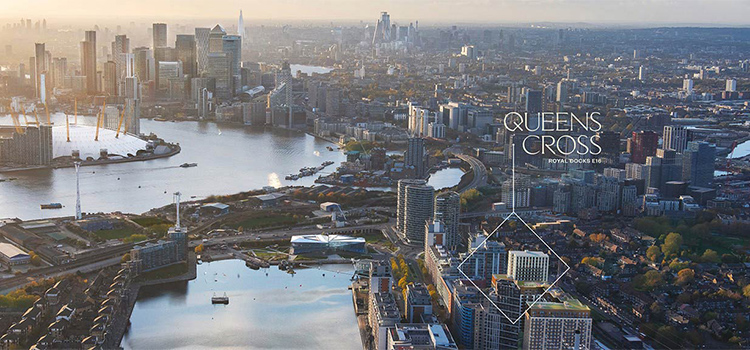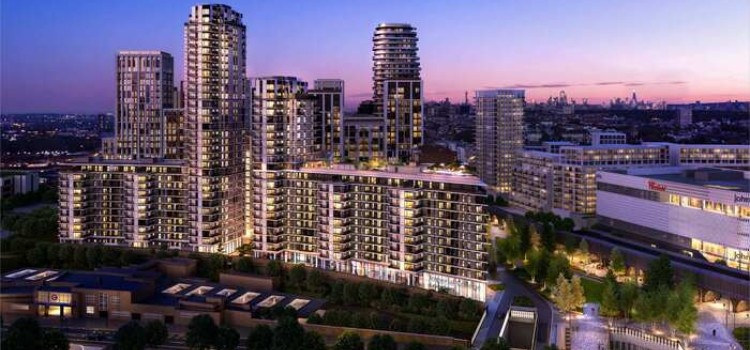How far will Londoners travel to reach their workplace? This question often pops up in the minds of working professionals when picking a neighbourhood and home in the UK capital. The average commute that most Londoners can accept to get into central London for work is around 45 minutes each way. Staying close to a station enable people to afford a better-quality lifestyle with quick commute into the city. For those who aim to reach Central London in 30 minutes or less and with a limited budget, this becomes harder to get, as there are either not many new developments within 5-minute walk to a station or even if there are, the price may be above your budget.
During the pandemic-enforced lockdowns, when work-form-home was the norm, the preferences of renters and homebuyers did change temporarily. Instead of proximity to a station, open green spaces and local amenities such as gyms, shopping centres, etc, were prioritised. However, as professionals in the capital returned to the offices and hybrid work models became the new normal, there has been a remarkable shift in property trends and rental demand.
Crossrail convenience – Elizabeth line

The opening of the Elizabeth Line in May 2022 dramatically changed intra-city travel by reducing commute times to a fraction of what it was before. Areas such as Southall or Woolwich, which were almost an hour and a half away from Liverpool Street, are now close to 20 minutes away. The shortened commute to central London and the City has contributed significantly to the uptick in property demand, prices and rental yield in these neighbourhoods.
In addition to swiftly connecting Essex in the East with Berkshire in the West and saving precious hours of commute to central London, the Elizabeth line has had a massive impact on local property prices. According to research by Nationwide, properties within 500m of an Elizabeth line or Tube station command a 10% premium compared to properties over a kilometre away. Experienced London developers like Berkeley and Mount Anvil conveniently have developments either on-site or close to an Elizabeth line station.
Transport at your doorstep
According to Rightmove, both property prices and rental demand have soared in the neighbourhoods around Elizabeth line stations. While competition among tenants is over 30 times higher than ten years ago near Custom House station, rental demand in Southall has also quadrupled. Asking rents in Slough and Burnham has also grown over 40%.

Just a four-minute walk from Custom House station and one stop to Canary Wharf on the Elizabeth line, Queens Cross by Mount Anvil has caught the attention of savvy buyers and renters alike, with estimated yields of up to 6%. In the South West, One Clapham is just a minute’s walk away from Clapham Junction station, which has 17 platforms with 3 connecting lines and is one of London’s busiest stations. This landmark site will be popular among renters, with estimated yields around 5.5%.
Masterplan developer Berkeley has a few developments with the Elizabeth line stations at the entrance of their development. Offering unique premium lifestyle amenities with unmatched connectivity, The Green Quarter although located in Zone 4 West London is only a few stops away to Heathrow Airport and Bond Street. Royal Arsenal Riverside is another example with an Elizabeth line station at the development entrance located in Zone 4 Woolwich, which takes only a 25-minute commute to Liverpool Street from this peaceful riverside development. Additionally, the Woolwich Arsenal DLR and mainline station are only a few metres away.
Similarly, Horlicks Quarter in Slough is another hyper-connected Greater London development, with a mainline and Elizabeth line station just a 7-minute walk away, and takes you to Paddington in as quick as 15 minutes.
The London Underground network (Tube), with 11 lines stretching over 400 kilometres and across 272 stations, shuttles approximately five million passengers daily. Therefore, properties near a Tube station are always in high demand, as the saying goes Central London is close if you are connected on the right line, with some of these developments offering potential growth to grow into a thriving new destination.

A masterplan in West London, White City Living, part of an £8 billion regeneration scheme alongside Imperial College London, Westfield London and the BBC Television Centre, is adjacent to two Tube stations – Wood Lane and White City, which is only 12 minutes from Bond Street, has grown in population due to the improved amenities it brings. In East London, located between Stratford and Canary Wharf, there is TwelveTrees Park, a masterplan regeneration that will see mixed residential, commercial and education offerings being developed at the entrance of West Ham station with 5 connecting lines, providing direct access to Stratford, Canary Wharf & Liverpool Street, is also another opportunity to look out for.
Connected to City living
Living near a station has a lot of benefits than being just a quick commute to work or university, it also allows Londoners to get into different parts of the city and easy access to the capital’s attractions. Londoners love their trains and the city comes to a standstill without them running.
As London’s population expands, passengers are only set to increase and with it, the demand for housing with close walking distance to a station will only set to rise. If you are an investor looking to invest in a London property close to a station, do reach out and we can propose available opportunities based on your needs and price range. For more information about more high yielding property areas and developments across London, check out our top investment grade property options.



